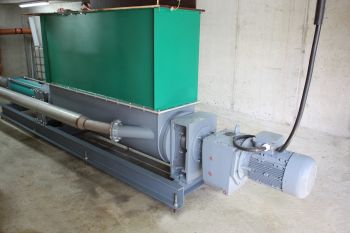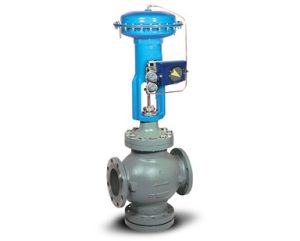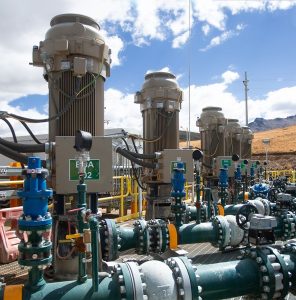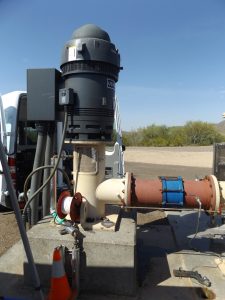Nemo B.Max by Netzsch for High Gas Yield
The Nemo B.Max progressing cavity pump made by Netzsch presents itself as the feeding technology which is perfectly tailored to biogas applications. Solids from the dosing unit are mixed with recirculated substances in the mixing pump.

To protect it against corrosion, the NEMO B.Max mixing pump is available as an option in stainless steel or with coatings (Image: Netzsch Pumps & Systems)
The homogeneous mixture with a dry matter content of up to 25% is then conveyed to the fermenter. The Nemo B.Max provides twofold assurance of optimum product feed into the conveying chamber: its pump housing is fitted with a large, rectangular feed hopper and removable, conically shaped compression chamber, as well as a coupling rod with patented, horizontally positioned conveying screw. This conveys quantities of up to 75 m3/h at pressures of up to 48 bar. Ideal feeding and mixing of the substrates into the biomass are ensured by the spiral lobes of the mixing and screw conveyor, which have been strengthened and offset. This not only prevents bridging, but also leads to optimum mixing of the liquid phase and dry substrate in the hopper chamber. At the same time, the feed tube, installed on the hopper housing contra to the flow direction of the pump, also ensures improved substrate mixing – which means a higher gas yield as well.
Netzsch designers have achieved compact dimensioning, low overall weight and constant shaft height, irrespective of the design and size of the drive, by flanging the drive directly to the pump s lantern. The system can be flexibly adjusted to the dosage unit in each case through the various hopper lengths on offer. Numerous inspection openings in the hopper and compression chamber of the Nemo B.Max make it easier for operators to carry out inspection and maintenance. In the event of the pipework getting clogged up, the Netzsch mixing pump has no problem flushing this out with a pressure of up to 12 bar, as the Nemo B.Max, with its two-stage construction, is also designed for high back pressures. The speed can be adjusted on the Nemo B.Max using a frequency inverter. This means the system can be flexibly adjusted to suit various raw materials, the mix ratio of the substrate and feed times.
The Nemo B.Max is particularly well suited to fermented, renewable raw materials, macerated biological waste, food waste and sugar beet, co-substrates, whole plant, maize and grass silage, solid manure, dry chicken manure and liquid manure.






